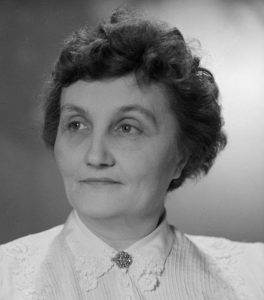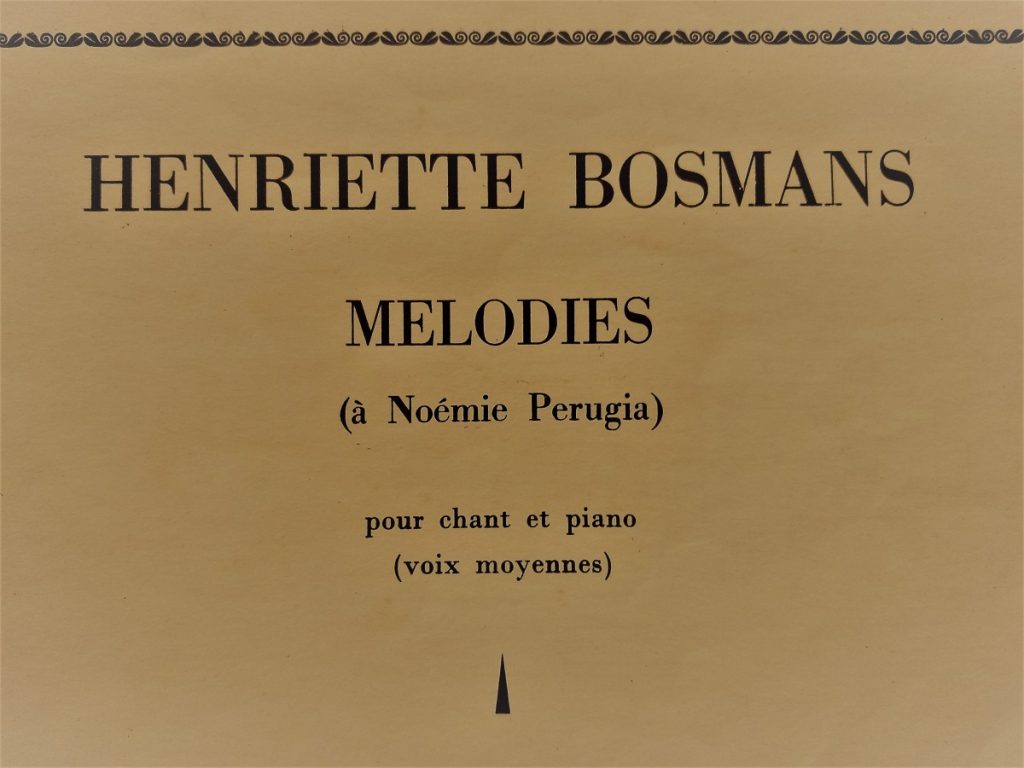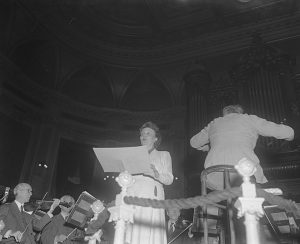Dix mélodies
1947/1948
BBC Radio 3
Composer of the week
Le diable dans la nuit
BBC Radio 3
Composer of the week
Complainte du petit cheval blanc
Noëmie Perugia & Henriëtte Bosmans
Written by Elizaveta Agrafenina
Noëmie Perugia (Nice, 1903 – Franeker, 1992)

In 1938, Perugia won the Concours international Gabriel Fauré and became an international singer specializing in French song repertoire. She collaborated with the contemporary composers of the time such as Anton Honegger, Jacques Leguerney, Maurice Thiriet and Henriëtte Bosmans.
Perugia toured around Europe and had several collaborative pianists. After the World War I, she devoted herself to teaching in Paris and giving masterclasses at other European conservatories.
Her relationship to Bosmans began in 1949 and lasted until Bosmans passed away in 1952. Though it was a short duration of time, the relationship was of intense and important nature for both of the artists.
In 1949, Noëmie Perugia gave a recital in Kleine Zaal, Concertgebouw. Bosmans was ecstatic after her performance and praised her musicianship. Bosmans wrote an artist profile over Perugia, which she later translated into French and sent to her. Bosmans compared, or rather made a clear distinction between a ‘young and pretty’ voice like Kathleen Ferrier’s, and Perugia’s deep and artistic personality, a true artist in her opinion.
Bosmans was inspired by the symbiotic relationship between Britten and Pears that she herself was searching for someone who gave her the artistic creativity, a muse. Perugia became that source of inspiration for Bosmans and she dedicated many songs to her. Broekmans & Van Poppel published 10 songs (Dix Mélodies) dedicated to Noëmie Perugia.

Sheet music
voice and piano
Sheet music
voice and orchestra
Four songs about “The Mystery of another life”
In summer of 1949, Bosmans wrote and dedicated four songs with text by Paul Fort to Perugia. The songs made a big impression and are considered one of her best songs. They all build up on the theme of mystery of another life and life after death. The songs were composed after the death of her mother, Sara Benedics.
The first song, La chansons des marins halés is a complaint from wife’s of seamen, whi think that even when the men return from the sea, that their souls remain at sea. Le regard éternel is about a lover who is dreaming that he only comes to life in death, Chanson fatale – is about thoughts of fatality and that everything has to perish; life, love, faithfulness and unfaithfulness. Complainte du petit cheval blanc is about a poet who has a brave white horse, the horse accomplishes his task through wind and storm, only to die before he experiences the delights of spring.
Bosmans and Perugia became a duo and performed both in France and the Netherlands, always with a songs by Bosmans added to the program. The duo was compared to other famous duos such as Pears and Britten, Ferrier and Moore, Bernac and Poulenc, Jo Vincent and Hengeveld, Schwartzkopf and Antonietti. In 1951, all the duo’s performed in Concertgebouw lied program.

Bosmans and Perugia had quite different personalities. Even though they had a successful collaboration, they had also many discussions and disagreements. Bosmans often sent manuscripts to Perugia, but the compositions weren’t always appreciated. The satirical Chanson de escargots is about snails going to a funeral, which Perugia didn’t find funny at all. Bosmans wrote La chanson de chiffonier after she heard Edith Piaf’s performance in Carré, Amsterdam, that song was of course of interest to Perugia as soon as she heard it was meant for Edith Piaf. Bosmans wish was to send her songs to Bernac, but she chose to be faithful to the collaboration with Perugia, yet Perugia herself collaborated with other pianists and using Bosmans as a contact in The Netherlands.
Short after meeting Perugia, Bosmans started writing more songs about love as a theme, whether the relationship between Bosmans and Perugia was of a romantic kind is uncertain. There was a strong admiration from both sides and one can assume that they had a romantic relationship and artistic collaboration.
Last years
The last years of Bosmans life were very difficult. She was extremely sick, in pain and without energy. Friends were prepared that she was going to die, but she kept being strong and survived longer that expected. In 1951, just before her birthday in July, she was extremely ill, her friends were prepared to organise a memorial concert, rather than Bosmans giving a concert with Perugia, as it was planned. However, in order to keep the hope and motivation of Bosmans, Perugia kept on planning the concert and hoping for a recovery. Perugia and Bosmans had a close relationship and Perugia stayed through the difficult times until Bosmans tragic and early death in 1952.
Perugia recorded together with Bosmans many of her songs, here you can listen to them perform together.
Texts to Dix mélodies
